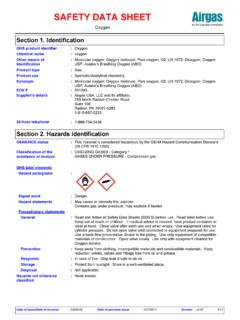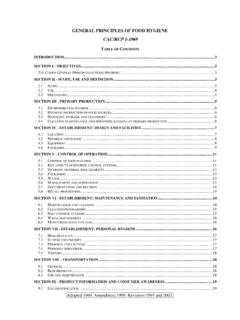Transcription of PRAAT - Stanford University
1 PRAAT Short Tutorial A basic introduction Pascal van Lieshout, University of Toronto, Graduate Department of Speech-Language Pathology, Faculty of Medicine, Oral Dynamics Lab V. , October 7, 2003 ( PRAAT ) PRAAT VARIATIONS PRAAT1 Short Tutorial Pascal van Lieshout, University of Toronto, Graduate Department of Speech-Language Pathology, Faculty of Medicine, Oral Dynamics Lab (ODL) A. Introduction This tutorial provides an introduction to some of the basic procedures in the program PRAAT . This is a freeware program for the analysis and reconstruction of acoustic speech signals. The software can be downloaded from the following website: This page also includes a PRAAT beginner s manual written by Sidney Wood.
2 PRAAT can be used on different operating systems (see PRAAT website for more information), but this tutorial is based on Windows 2000 OS. PRAAT is a very flexible tool to do speech analysis. It offers a wide range of standard and non-standard procedures, including spectrographic analysis, articulatory synthesis, and neural networks. This tutorial specifically targets clinicians in the field of communication disorders who want to learn more about the use of PRAAT as part of an acoustic evaluation of speech and voice samples. The following topics will be covered: 1. Finding information in the Manual 2. Create a speech object 3. Process a signal 4. Label a waveform 5. General analysis (waveform, intensity, sonogram, pitch, duration) 6.
3 Spectrographic analysis 7. Intensity analysis 8. Pitch analysis 9. Using Long Sound files In this tutorial, readers are assumed to be already somewhat familiar with standard Windows 9x/NT/2000 tools, like opening and closing windows, making windows smaller or bigger etc. If not, please ask your colleagues who are more familiar with PC Windows OS for help or check the following website ( ) for more information on Microsoft products. If the instruction mentions the word 'click (ing)', it simply means that you have to position your mouse cursor on top of the indicated location and press the Left-mouse button. If another mouse-button is required, this is explicitly mentioned in the text. As usual in Windows, once you made your choice for a particular window, you confirm by clicking the 'OK' button.
4 If you want to go back or cancel, just click the 'Cancel' button. The main menu options are located on the right- 1 PRAAT (a system for doing phonetics) was developed by Paul Boersma & David Weenink at the Phonetic Sciences department at the University of Amsterdam. 2hand side of the ' PRAAT Objects window, but the contents of the menu may change depending on the type of (sound) object you have selected. Please notice that earlier versions of PRAAT may differ in layout and function from the version described here ( PRAAT v. ). Comments and suggestions on this tutorial are welcome; just send an e-mail to: users can also join a discussion list, which provides a useful forum for asking questions as well as a database for sample scripts.
5 More information can be found here: THIS DOCUMENT AND OTHER DOCUMENTS PROVIDED PURSUANT TO THIS TUTORIAL ARE FOR INFORMATIONAL PURPOSES ONLY. The information type should not be interpreted to be a commitment on the part of the author and the author cannot guarantee the accuracy of any information presented after the date of publication. INFORMATION PROVIDED IN THIS DOCUMENT IS PROVIDED 'AS IS' WITHOUT WARRANTY OF ANY KIND. The user assumes the entire risk as to the accuracy and the use of this document. This document may be copied and distributed subject to the following conditions: 1. All text must be copied without modification and all pages must be included 2. All copies must contain a copyright notice and any other notices provided therein 3.
6 This document may not be distributed for profit Toronto, May 29, 2003 PvL 3B. Working with PRAAT 1. Finding information in the Manual If you open the program2, the following two windows will appear: The window to the left is the PRAAT objects window. On the left-hand side you will normally see a listing of your speech files ('objects' in PRAAT language) which can either be created from scratch (see section 2, #1-15) or read from a file (section 2, #17). The window on the right is the PRAAT picture window and is used for plotting graphs. These can be saved in various formats, including an EPS postscript3 or a Windows Metafile for later word processing purposes or they can be printed directly using "print" (CTRL-P) in the file menu.
7 Information about the program and all its procedures can be found in the PRAAT manual by simply clicking on the Help button in the main menu of the PRAAT objects window. If you do that (try it now), you will find the following options available to you: 2 If not already present, create a shortcut to the " " file on your desktop for easy access. 3 Postscript files can be read and printed using the program Ghostview ( ; version or higher). This is a free downloadable program (see homepage ~ghost/ ) 4 Most options speak for themselves and you can try them out for yourself. The tutorials are useful in that they provide more information about how to deal with specific topics in PRAAT .
8 For those who want to use scripts in PRAAT to automate certain procedures, the Scripting tutorial is highly recommended. More information about the use of formulas, operators, functions etc. can be found in the Formulas tutorial . Check the Frequently Asked Questions section with answers to common issues raised by users and make sure you are aware of recent changes to the program listed in the What s new? section. The option that will be used most often by the majority of users is the 'Search PRAAT manual' (also notice that some functions have short-cut keys, in this case Ctrl-M). Click on the option (try it now), and the following window will appear Simply type a search string in the empty space of the window, and you will find the information that is available on your search topic.
9 For example, find information on the following topics: - formant - pitch - intensity - spectrogram - printing As you will notice, some queries will give you a lot of options, others are more restricted. 5 Remember that you can always invoke this Help function from anywhere in the program, and that most procedures allow you to invoke specific help information directly from their window menus (see for example the Search Manual window above). 2. Create a speech object Before analyzing speech samples, it is important to adjust your sound card options properly. To access these options, you have to open the "Volume control" window. For Windows 2000 the following steps apply4: 1.
10 Go to 'Start' of the Windows Task bar (left lower corner) 2. Go to 'programs' -> 'accessories' -> entertainment -> select 'volume control' 3. This will bring up the following (or a similar) window (depending on the sound card that is installed on your PC) 4. Go to 'Options' -> 'properties' -> select 'recording' 5. Now you will see a number of options (including Line-In & Microphone) 6. Select 'microphone' by clicking on select button (White Square below volume meter) and deselect all other options. Adjust 'Volume meter' if necessary to about halfway the scale. You can leave this window open and put it on the Task bar by clicking 'minimize' button [right upper corner, first button to the left { }].



















